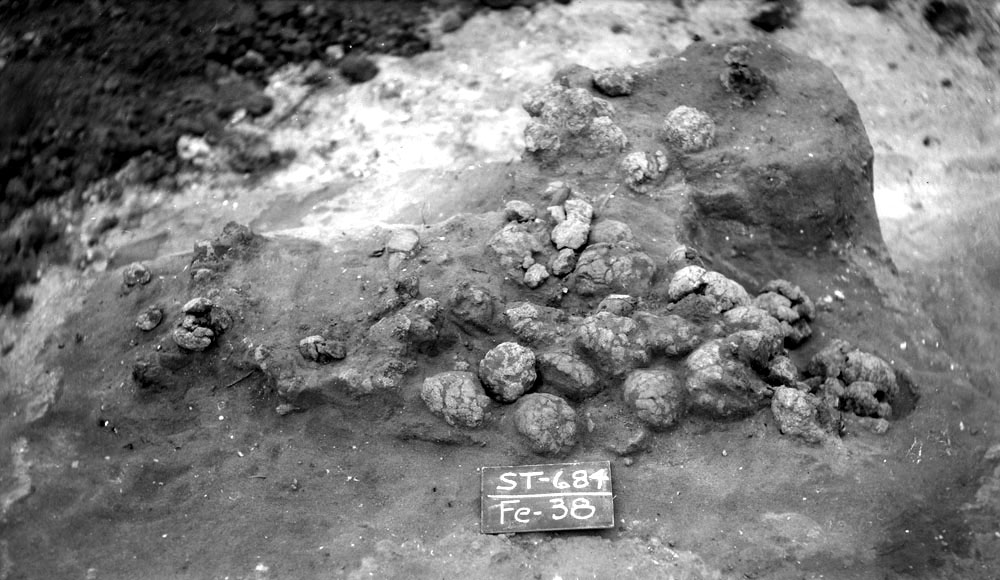
 |
| This cluster of baked clay balls at the Morhiss Mound site in south Texas exemplifies the use of baked clay as a substitute for cooking stones. When heated, grapefruit-sized "balls" of wet clay were transformed into crude ceramic objects that could hold and slowly release heat for baking, just like heated pieces of sandstone and limestone. Similar artifacts have been found at many sites along the Gulf coastal plains where stone is hard to find. The same function is attributed to "Poverty Point Objects" (shaped pieces of baked clay) found at the famous Poverty Point site (ca. 1500-800 B.C.) in Louisiana. TARL Archives. |